Finnish Spitz
The Finnish Spitz is a dog breed that originated in Finland to hunt all game types, from small ones like birds and squirrels to bears. While hunting, Finnish Spitz uses barking to indicate the position of the game. This way, he not only shows the hunter the position of prey but also draws the animal’s attention to himself, allowing an easier approach for the hunter.
This is the reason these dogs are called "Bark Pointers." Today, in his native country, the Finnish Spitz is still used to hunt game birds, squirrels, etc. In America, Finnish Spitz dogs are primarily companion dogs. These dogs almost became extinct when transportation and roadways improved.
People started coming to Finland with their dogs, mating them with Finnish Spitz. This cross-breeding almost caused the extinction of the Finnish Spitz breed. Luckily, two hunters from Helsinki, Hugo Sandberg and Hugo Ross, went on a hunting trip in the forests of Finland and saw some Finnish Spitz dogs hunting.
At that moment, they realized that this breed needed to be saved. They informed the public about these dogs and their importance to Finland, and with that started the salvation of the Finnish Spitz breed.
FUN FACT: Since 1979, the Finnish Spitz has been the national dog of Finland.

Height:
15.5-20 in (39-51 cm)

Weight:
20–33 lb (9–15 kg)

Origin:
Finland

Life Expectancy:
13-15 years
Dog Breed Characteristics
The Finnish Spitz is a square-proportioned, fox-looking dog with erect ears and curled tail. This breed is registered in the two main cynology associations we are focusing on and both of them have a detailed standard for these dogs. They are described as being lively, vigorous, very brave, and extremely determined. Might be a little reserved towards strangers, but never vicious.
They are also described as eager hunters. They specialize in hunting wild forest fowl and can work independently but adapt well to pack hunting. Their hunting method is marking the game by barking.
Coat
They have a medium-length, double coat combined with a straight and harsh outer coat and a short soft undercoat, which provides warmth in cold weather. The hair on the head and legs is short. Males typically have more coats than females. The coat is a solid color and comes in shades of golden-red. The Finnish Spitz has white markings on the tips of the toes and the chest. Sometimes, these dogs have black hairs along the lip line, on the tail and back.
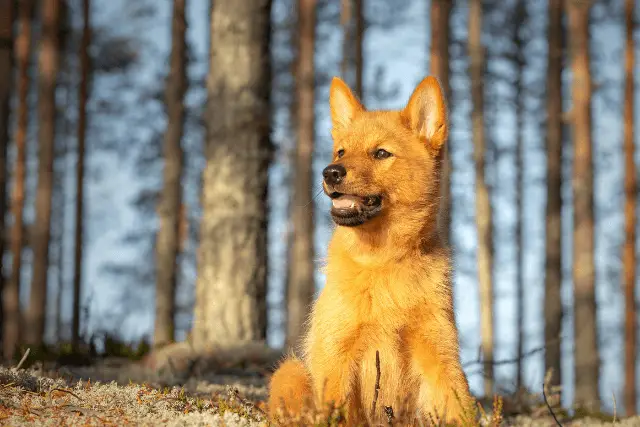
FUN FACT: Finnish Spitz puppies are born dark-colored because they have quite a lot of black hair on them. After approximately two years, this black color usually fades away.
Shedding
Finnish Spitz dogs are not complicated when it comes to caring and grooming. The breed standard is very specific - no trimming of the coat (except for the feet). They only need to be brushed regularly, every few days (in the spring and fall, when shedding is intense, brushing should be more frequent). These dogs are naturally clean, demanding only basic care.
Exercise
The Finnish Spitz has a lot of energy and is the happiest in an active family that will fulfill this dog’s need for daily exercise. This dog is lively, playful, and active, prefers colder climates, and enjoys being outside. This dog was bred for hunting, so keep an eye on him while walking around, especially if the dog is off-leash. The Finnish Spitz is an awesome family dog that craves human companionship and doesn’t like to be apart from his family.
The dog is good-natured and fond of children. This dog can tolerate a lot and will most probably just walk away when he has had enough.
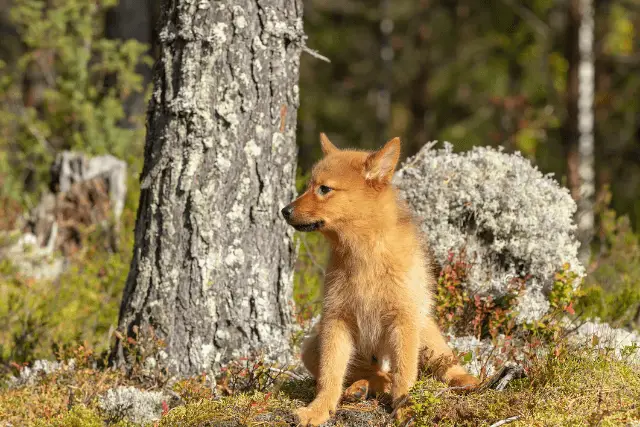
FUN FACT: Try not to argue in front of your Finnish Spitz dog. These dogs are very sensitive and are unhappy when there are tensions in the family.
Is Finnish Spitz aggressive?
This dog goes along well with other pets, including cats, too. Sometimes, the Finnish Spitz can be aggressive towards another dog that he does not know. The Finnish Spitz is also suspicious and aloof towards strangers. This dog is an excellent watchdog and will alert the family if someone is approaching or something odd is going on around his territory.
In these cases, the Finnish Spitz will engage in his favorite activity — barking! These dogs bark. A lot! It is important to teach your dog to stop barking on command. Otherwise, they could drive you and your neighbors crazy. They can achieve 160 barks in just one minute. Except for barking, these dogs use all kinds of sounds to communicate.
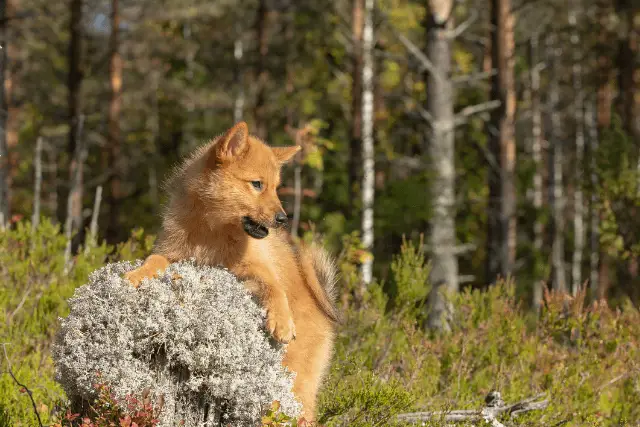
FUN FACT: In Finland, there are annual contests to select a “King of the Barkers.”
Intelligence
Training this dog can be tricky. These dogs are strong-willed and can be stubborn and independent. They are best trained with a soft voice and touch. Because they are very intelligent, they can become bored easily. Therefore you should keep your training sessions short and interesting.
FUN FACT: Finnish Spitz dogs mature slowly. It usually takes about three or four years for them to become mentally mature.
Health problems
The Finnish Spitz has a life expectancy of 13-15 years. These dogs live long and usually a healthy life. They suffer no significant breed-related disorders.

There are only a few health conditions these dogs are prone to, including
- hip dysplasia,
- patellar luxation (a condition where the knee joint slides in and out of place, causing pain),
- epilepsy.
Another condition the Finnish Spitz is prone to is obesity. These dogs love to eat, especially treats. They will try to get everyone to get them treats and thus can easily become overweight. Try giving your dog some law-fat treats, such as carrots, since day one.
Finnish Spitz breeders
If you are thinking of getting a Finnish Spitz, be prepared to wait. These dogs are not that common outside the Scandinavian countries so your best chance of getting one is finding a Finnish Spitz breeder from their native region. Make sure that the breeder you found is registered and reputable.
It is important that the breeder takes the best possible care of their dogs and that they are bred carefully. That is the best way to make sure that your new puppy will not have any hereditary diseases or behavioral problems in the future. Take your time and do proper research.

Make sure that this breed fits your lifestyle so that you can fully enjoy your dog and your dog will fully enjoy their new life with you and your family.
World Dog Finder team

Updated at31.08.2023.
Breed History
The exact origin of this breed is up for debate since it is not completely documented and recorded. There were spitz-type dogs that were used for hunting purposes in Finland for centuries, but we cannot be completely sure that it was this exact breed.
Many canine historians and lovers of this breed believe that these types of spitz dogs were brought from central parts of Russia. They believe that the dogs were brought to Finland by tribes that migrated there many centuries ago. They were relying on these dogs for hunting. This breed was allowed to develop without any outer influences since they were extremely isolated.
As the infrastructure improved, foreign influence started to threaten this breed. People started migrating, and they were bringing their dogs with them. This breed encountered the same problem as the Japanese Akita did. It was heavily crossbred, and by the end of the 19th century, this breed was nearly crossbred into oblivion.
That was a worrying time for the Finnish Spitz. At that time, a miracle happened, and the two hunters we already mentioned came to Finland.
Mr. Sandberg and Mr. Ross immediately fell in love with this breeds hunting abilities and realized how important it is to save them. Mr. Sandberg wrote a piece for the 1890 edition of a Finnish “Sporten” magazine and has described this breed in great detail. His article was written so well that the Finnish Kennel Club based this breed's standard on it. The breed was officially named “Finnish Spit” in 1897.
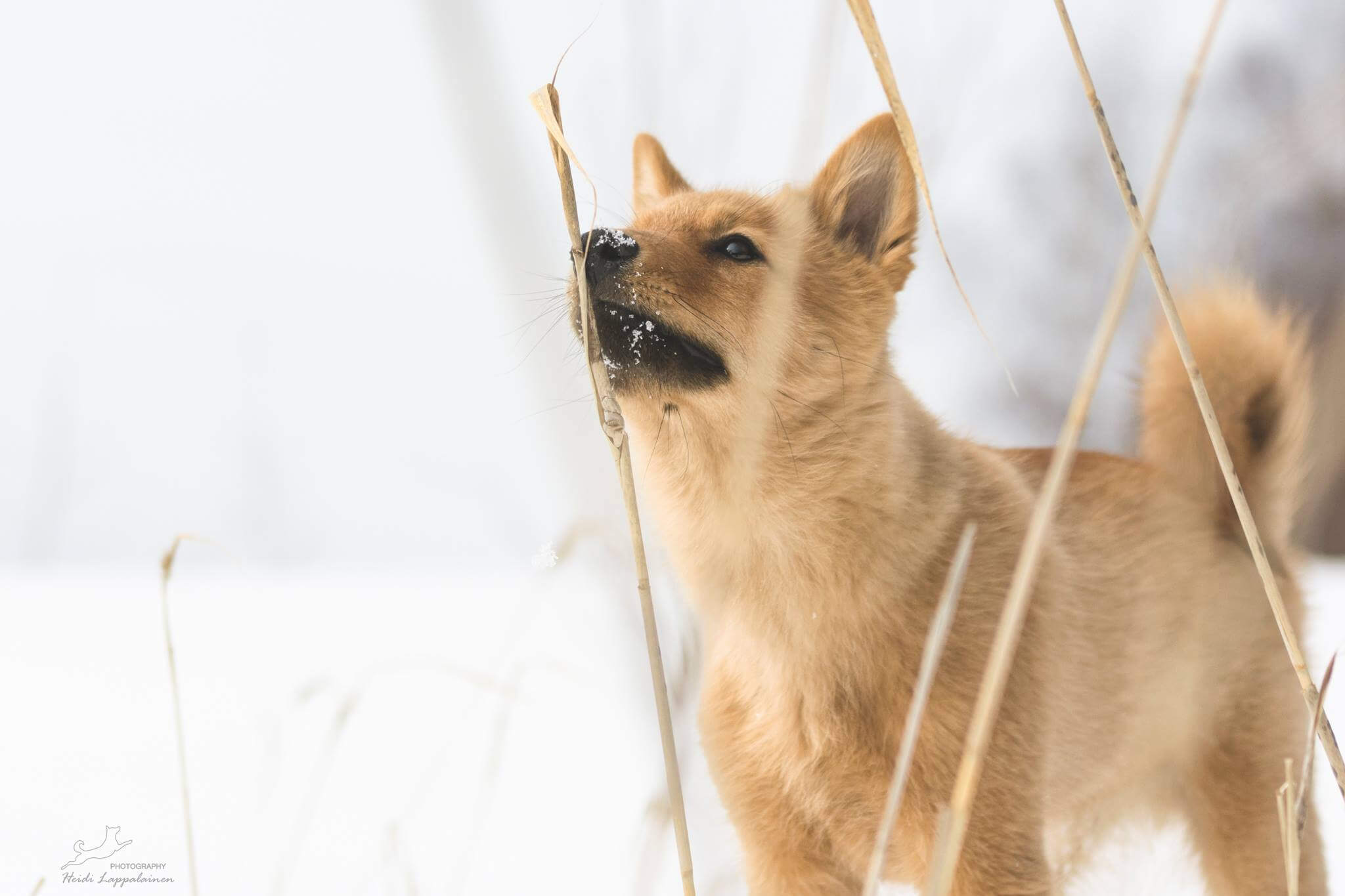
FUN FACT: The “savior” of the breed, Hugo Sandberg, was a judge on the first-ever Helsinki dog show.
Mr. Roos decided to take a different road and was an active member of the Finnish Spitz Society. He has been actively breeding this breed for over 30 years. Some of his dogs were the pioneers of this breed and have started very successful bloodlines. He was active in cynology until the middle of the 1920s.
First Finnish Spitz that was brought to the United Kingdom were dogs that a hunter by the name of Sir Edwyn Chichester imported. The same thing happened with previous hunters. He went on a hunting trip and was extremely impressed with how this breed hunted. He decided he has to take these dogs with him, and later, he even imported more dogs for breeding purposes.
Thanks to a British woman named Lady Kitty Ritson, the first English-Finnish Spitz Club was created, and she alone was credited for the huge popularization of this breed in England. She put in much effort and even registered the Club with the Kennel Club of England in 1934. She is also credited for giving this breed the nickname Finkie.
The beginning of the Second World War turned out to be a troubling time for this breed, as it was for many others. The dogs that remained were of very poor quality, and the breed needed help to get back on the right track. The Club managed to import some dogs from Finland and Sweden and carefully introduced them to the existing bloodlines to raise the general quality of the breed.
These imported dogs were of such high quality that they were the ancestors of the most successful Finnish Spitzes until the beginning of the 1970s.
First Finnish Spitz that was imported to the USA was from England and was brought there by a man named Rudolph Cullabine. The breeding of this breed began in the 1960s.
About 15 years have passed since the first dog came to the United States, and then the Finnish Spitz Club of America was formed. They decided to take the original standard from Finland and molded their standard based on that. They could not get the breed fully recognized by the AKC but were allowed to show their dogs in the Miscellaneous Class. In 1988 the breed was allowed to be shown and exhibited in a Non-Sporting group.
This breed is very popular in their native land as well as in Sweden. Outside of their native region, they didn’t become popular and never really got to that rise of popularity like some other breeds did. However, their number is growing in Finland and Sweden, where there are 2.000 new dogs registered every year. The total number of dogs registered between 1890 and 1930 was 637.
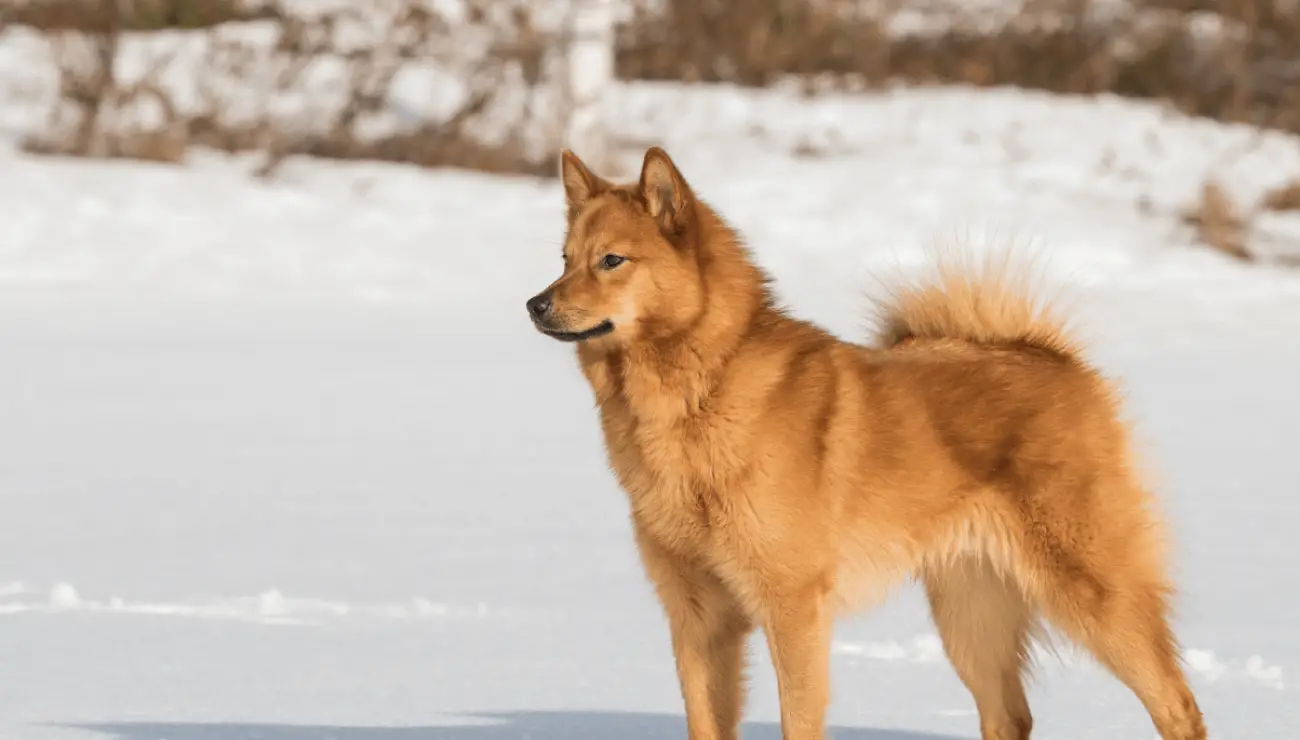
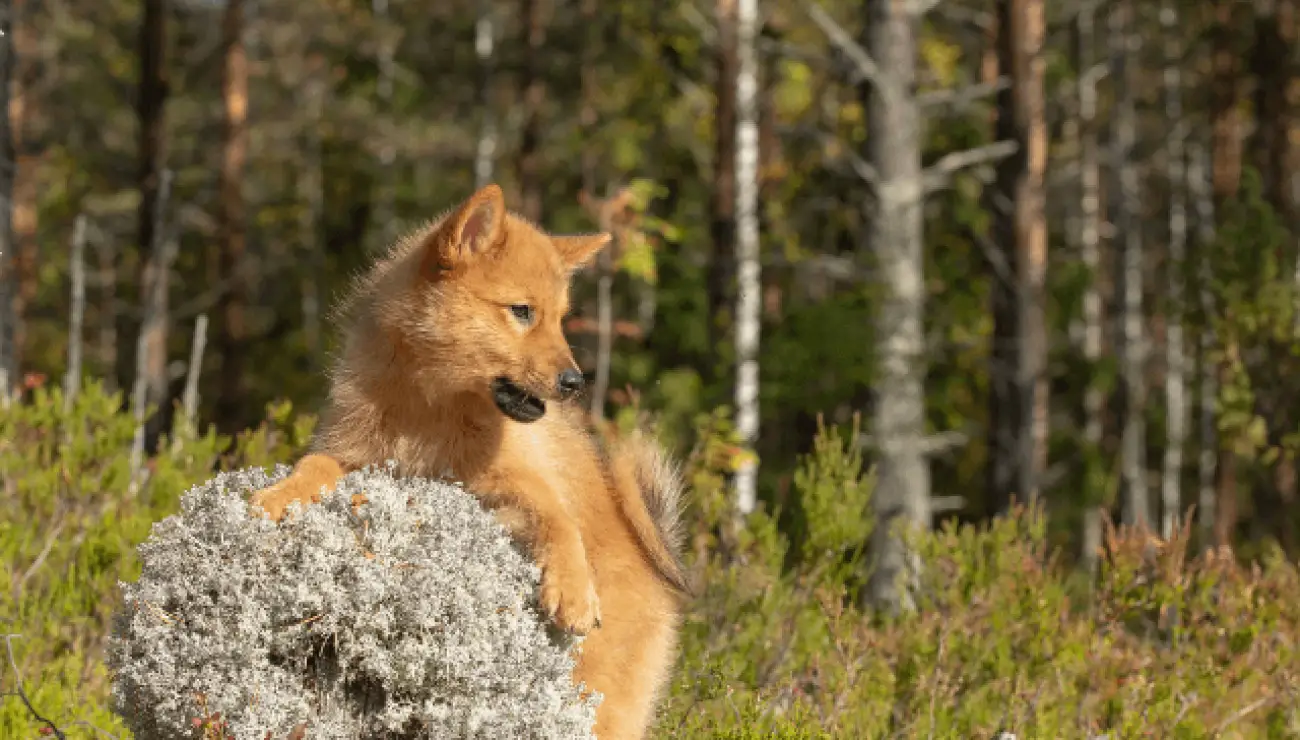
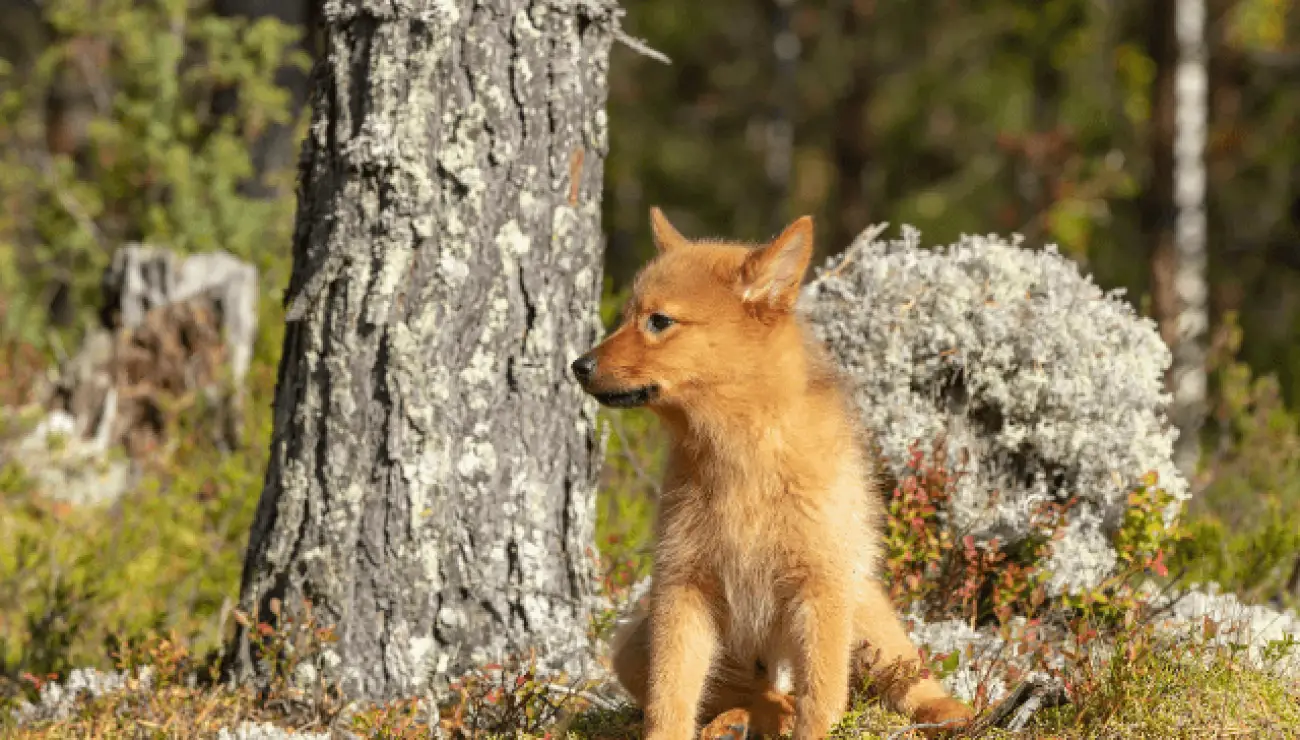
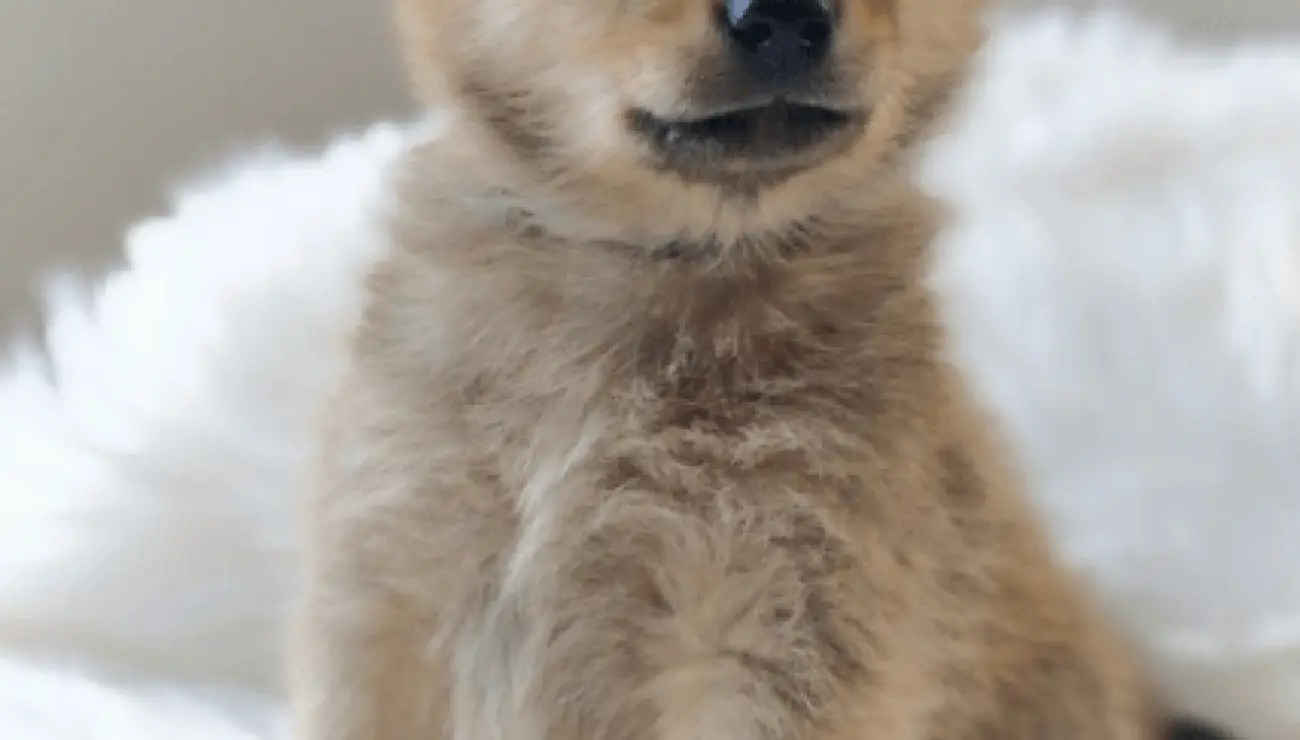


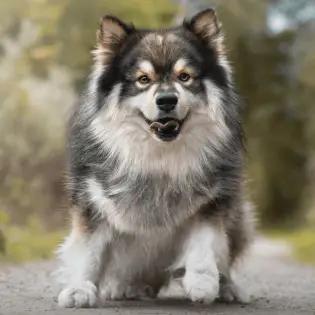

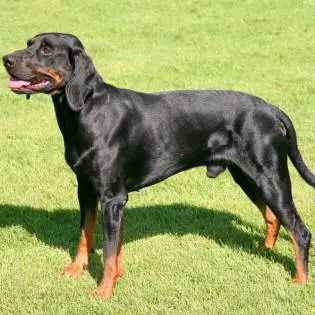

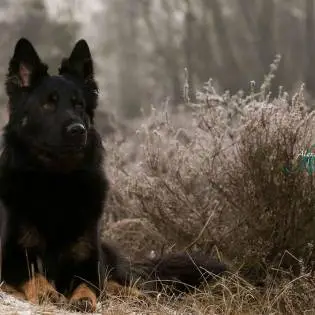
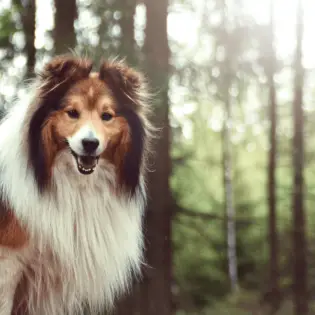
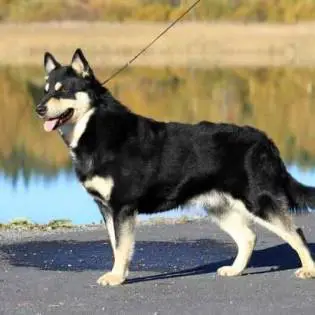
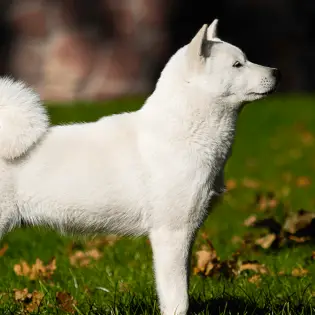

Share